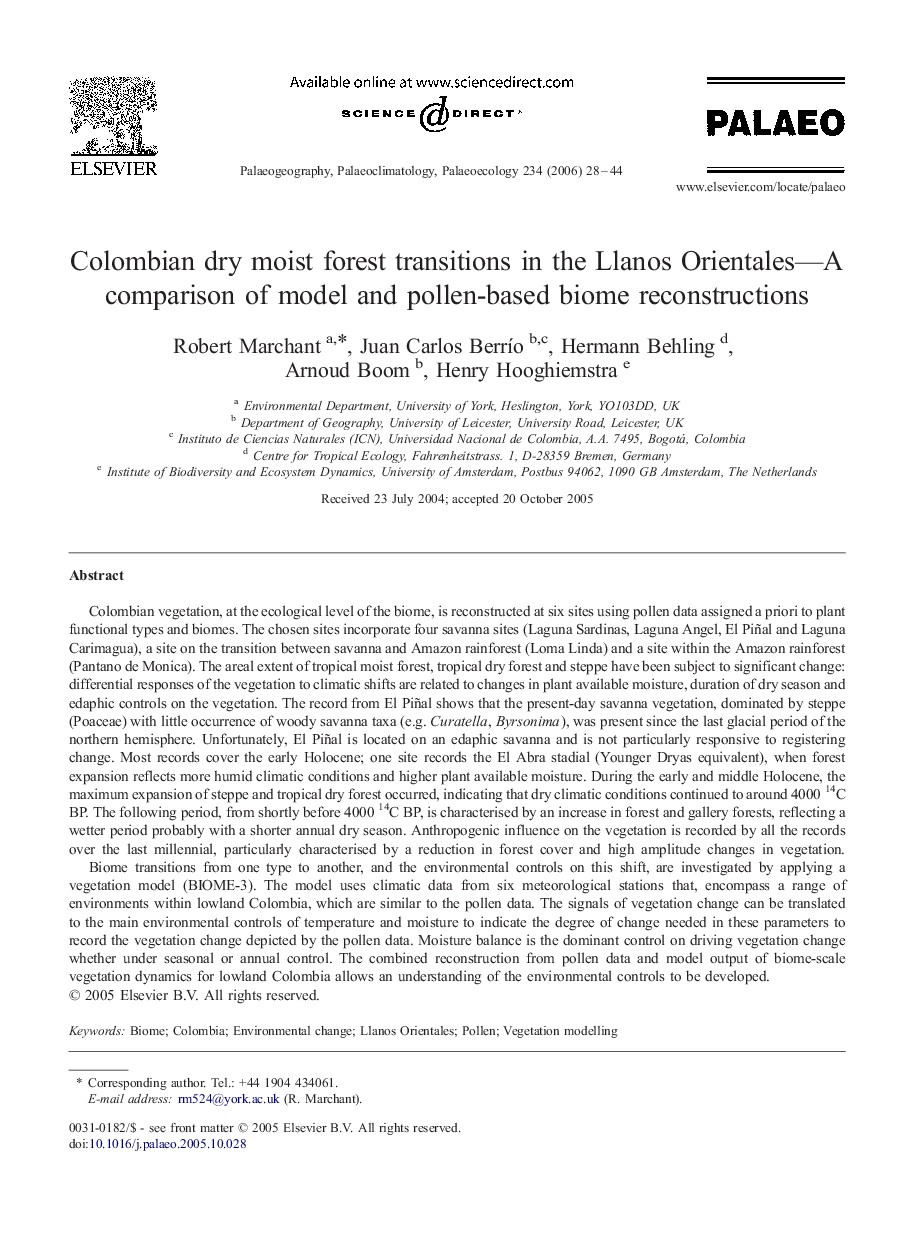| Article ID | Journal | Published Year | Pages | File Type |
|---|---|---|---|---|
| 4469436 | Palaeogeography, Palaeoclimatology, Palaeoecology | 2006 | 17 Pages |
Colombian vegetation, at the ecological level of the biome, is reconstructed at six sites using pollen data assigned a priori to plant functional types and biomes. The chosen sites incorporate four savanna sites (Laguna Sardinas, Laguna Angel, El Piñal and Laguna Carimagua), a site on the transition between savanna and Amazon rainforest (Loma Linda) and a site within the Amazon rainforest (Pantano de Monica). The areal extent of tropical moist forest, tropical dry forest and steppe have been subject to significant change: differential responses of the vegetation to climatic shifts are related to changes in plant available moisture, duration of dry season and edaphic controls on the vegetation. The record from El Piñal shows that the present-day savanna vegetation, dominated by steppe (Poaceae) with little occurrence of woody savanna taxa (e.g. Curatella, Byrsonima), was present since the last glacial period of the northern hemisphere. Unfortunately, El Piñal is located on an edaphic savanna and is not particularly responsive to registering change. Most records cover the early Holocene; one site records the El Abra stadial (Younger Dryas equivalent), when forest expansion reflects more humid climatic conditions and higher plant available moisture. During the early and middle Holocene, the maximum expansion of steppe and tropical dry forest occurred, indicating that dry climatic conditions continued to around 4000 14C BP. The following period, from shortly before 4000 14C BP, is characterised by an increase in forest and gallery forests, reflecting a wetter period probably with a shorter annual dry season. Anthropogenic influence on the vegetation is recorded by all the records over the last millennial, particularly characterised by a reduction in forest cover and high amplitude changes in vegetation.Biome transitions from one type to another, and the environmental controls on this shift, are investigated by applying a vegetation model (BIOME-3). The model uses climatic data from six meteorological stations that, encompass a range of environments within lowland Colombia, which are similar to the pollen data. The signals of vegetation change can be translated to the main environmental controls of temperature and moisture to indicate the degree of change needed in these parameters to record the vegetation change depicted by the pollen data. Moisture balance is the dominant control on driving vegetation change whether under seasonal or annual control. The combined reconstruction from pollen data and model output of biome-scale vegetation dynamics for lowland Colombia allows an understanding of the environmental controls to be developed.
